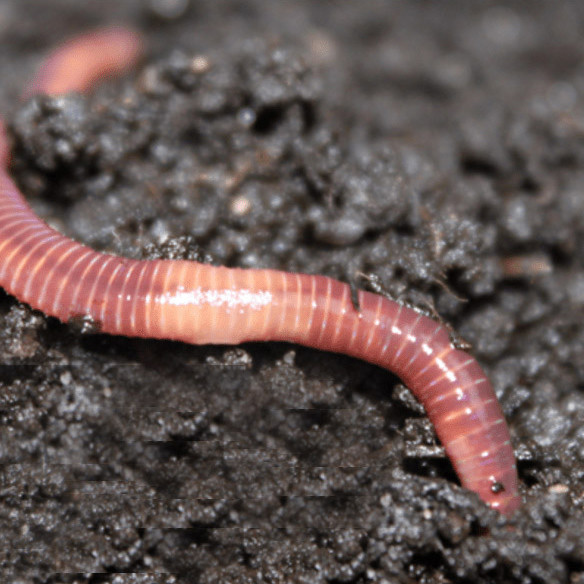Best red worms: Care tips for beginners
Get one of the most Out of Your Garden Compost With Red Wigglers
The assimilation of red wigglers into your composting system can dramatically enhance the effectiveness and performance of waste management methods. These worms are not only skilled at damaging down natural materials however also contribute to the development of high-grade garden compost that enriches soil health.
Comprehending Red Wigglers
Comprehending red wigglers is necessary for any person interested in vermicomposting, as these worms play a pivotal role in breaking down raw material. Clinically recognized as Eisenia fetida, red wigglers are identified by their reddish-brown shade and slender bodies, typically measuring between 3 to 4 inches in size. Unlike earthworms, which prosper in dirt, red wigglers prefer a damp, organic-rich environment, making them excellent for composting systems.
These worms are renowned for their voracious appetite, eating half their body weight in organic product daily. This ability enables them to rapidly decompose cooking area scraps, lawn waste, and other naturally degradable materials, transforming them into nutrient-rich compost. Red wigglers grow in temperatures varying from 55 ° F to 77 ° F, demanding careful monitoring of their setting to ensure optimal activity.
Moreover, red wigglers recreate rapidly, doubling their population roughly every 3 to 4 weeks under perfect conditions. This quick recreation is important for preserving a reliable composting procedure. red wigglers. Comprehending their biology and behavior is crucial for anyone seeking to harness their capacity in sustainable waste monitoring methods
Benefits of Vermicomposting
Vermicomposting offers numerous advantages that expand beyond easy waste reduction. This cutting-edge technique leverages the all-natural decay abilities of red wigglers to change organic waste right into nutrient-rich garden compost, enhancing dirt health and fertility. The resulting vermicompost is including helpful microorganisms, which can boost soil framework and boost vitamins and mineral accessibility for plants.

In addition, vermicomposting can be exercised in different settings, making it accessible for urban occupants and those with minimal outside area. It requires marginal financial investment and can be conveniently handled indoors or outdoors, making it suitable for numerous way of lives.
Making use of vermicompost likewise promotes much healthier plant development by enhancing microbial task, boosting water retention, and offering important nutrients. Gardeners and farmers that incorporate vermicompost right into their methods often observe raised crop returns, making vermicomposting a lasting selection for both waste administration and farming efficiency.
Setting Up Your Worm Bin
Creating an efficient worm bin is important for successful vermicomposting, and with simply a few crucial parts, anybody can develop an effective system. Start with a suitable container; a plastic or wood container with a lid functions well. Preferably, the bin needs to be between 10 to 18 inches deep to give adequate room for the worms to flourish.
Make certain appropriate air flow by piercing small openings in the sides and cover, enabling air flow while retaining wetness. Keep a balance between dampness and drain; the container should perspire yet not waterlogged. A layer of bed linen, such as shredded paper or cardboard, provides a habitat for the worms and help in moisture retention.
Consider the location of your worm container (red wigglers). By adhering to these guidelines, you will create a conducive setting for red wigglers, laying the foundation for an effective vermicomposting venture.
Feeding Your Red Wigglers

Stay clear of feeding them meat, dairy products, and oily foods, as these can draw in pests and develop unpleasant smells. Furthermore, it is important to chop or shred bigger products to facilitate quicker disintegration, ensuring your worms can access the nutrients extra effectively.
Moderation is important; overfeeding can bring about anaerobic conditions, hurting the worms and decreasing the composting process. Screen the container for uneaten food and change your feeding regime as necessary. A general regulation is to offer concerning half a pound of food per extra pound of worms per week.
Last but not least, preserving dampness is vital. Aim for a moist, yet not soggy, setting, as dampness aids in the failure of food and supports worm task. By carefully handling their diet regimen, you can improve the performance of your red wigglers in transforming natural waste right into abundant garden compost.
(red wigglers)
Harvesting and Using Garden Compost
After a number of weeks of diligent composting, you will certainly discover that the rich, dark material produced by your red wigglers is all set for harvest. One effective technique is to make use of a light source; red wigglers are sensitive to light and will certainly tunnel deeper right into the material, enabling you to scoop out the top layer of compost.
As soon as collected, the garden compost can be made use of in numerous applications. Mix it right into garden soil to improve structure and fertility, or use it as a leading clothing for potted plants.
Bear in mind to store any extra compost in a trendy, dry location to keep its high quality. By efficiently collecting and utilizing the garden compost generated by red wigglers, you not only enhance your yard but likewise advertise lasting gardening methods.
Verdict
Including red wigglers right into composting techniques dramatically boosts the effectiveness of natural waste transformation. The usage of these worms not just increases the composting process yet also enhances dirt top quality through their nutrient-rich castings. Establishing an appropriate worm container and keeping optimal conditions guarantees like this the health and wellness and performance of these microorganisms. Inevitably, the integration of red wigglers in composting adds to lasting horticulture, reduces landfill waste, and promotes environmental stewardship with effective resource recycling.